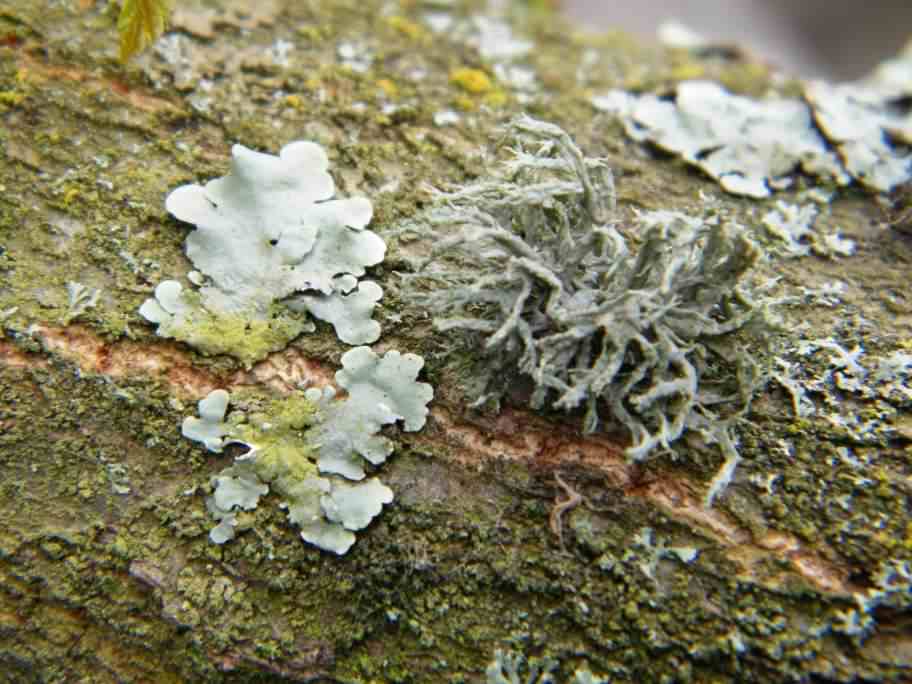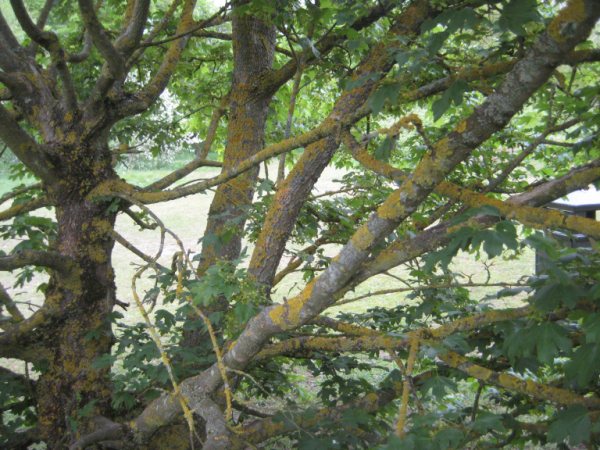
Photo ©2010–

Photo ©2010–

Photo ©2010 Fay Newbury
University of Reading
Lichens - Generic info
Lichens are a symbiosis between a fungus and an algae. The algae contains chlorophyll, a green pigment that it uses in photosynthesis to produce carbohydrates which are sugars. These are used as "food" by the algae but are absorbed by the fungus so in this way the fungus get its nutrients from the algae, the fungus probably giving shelter for the algae allowing it to grow in conditions that it may not otherwise do Eg. rocks, concrete slabs, roofs etc. Many lichens grow with a crust like appearance in varying colours, and may grow as little as 1mm (0.04in) per year, however in more favourable conditions growth rates can be in the order of two to three centimetres (1in) a year.
BCP do not advise or recommend that any Lichen are eaten or used as an herbal remedy. Some Lichens have been collected in the past and used for dying wool and also as medicines, example - the bright orange Xanthoria parietina was used in medieval times as a remedy for jaundice.
 Photo ©2010– |
 Photo ©2010– |
 Photo ©2010 Fay Newbury University of Reading |
| Click any photo for a larger image | ||
Site design ©1999– Brickfields Country Park - Privacy -